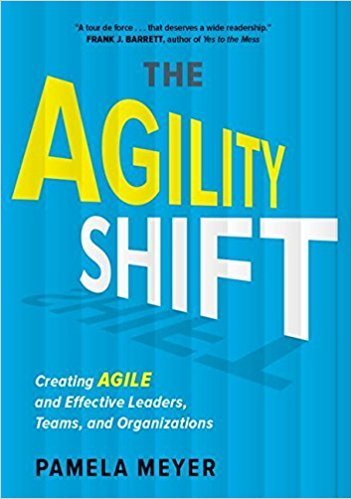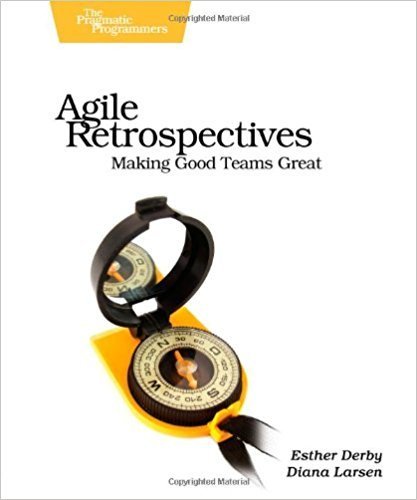Helpful Resources to Help Non-Tech Industries Learn Agile Methodology
Agile methodology refers to a way of working that is iterative and flexible. Agile emphasizes real-time feedback integration from stakeholders and customers by breaking projects down into smaller, workable pieces that can be changed at any time. It’s focus on people and flexibility over process and documentation makes it incredibly transferrable sector-wise. The concept of Agile began in the software industry, which means much of the available literature is specifically tailored to software projects. Readings are often technical and complex even though many of the powerful Agile principles and tools can be applied in non-tech industries as well. We’ve compiled a list of resources for anyone beginning to learn about Agile, or for anyone not from a software background.
With this reading list, your non-tech organization can learn Agile methodology, begin applying Agile, accelerate innovation across your teams, and much more.
We strongly believe that with a little bit of learning, Agile can help any type of organization!
At Overlap our Agile process helps us to:
Deliver Value Continuously
Make Safety a Prerequisite
Make People Better
Experiment and Learn Rapidly
We’re always iterating the way we apply Agile in our own organization. You might say we’re agile about Agile.
We’ve coached others on Agile methodology, and seen first hand how non-software organizations can adapt Agile to suit their specific needs. The principles of Agile are universal, but the tools that work best for each team can vary.
It takes time, flexibility, and many iterations to figure out what works best for your organization. We often recommend that our clients start their journey into Agile with just a few resources and customize the process along the way. You can begin your Agile journey with this reading list!
A List of Reading Resources For Applying Agile In Non-Tech Industries:
Books on Agile
The Agility Shift: Creating Agile and Effective Leaders, Teams, and Organizations
By Pamela Meyer
Agility Shift claims “planning” can be the worst thing a company can do. Any number of things can go wrong or change for an organization. Consider all of the aspects that are out of your control: exchange rates, competitors, political environments, natural disasters.
In this book, you’ll gain actionable strategies to put Agile into practice immediately and learn how to achieve continuous results in complex, ever-changing environments.
By Taffy Williams
Many organizations fail to master agility even though they know unexpected obstacles can overturn the most promising and well-planned ventures. Think Agile is an essential guide to a powerful new skill.
In this book, you’ll find real-life Agile case studies that will help you assess your flexibility and learn to be more open-minded.
Agile Innovation: The Revolutionary Approach to Accelerate Success, Inspire Engagement, and Ignite Creativity
By Langdon Morris, Moses Ma, Po Chi Wu
Get the best of Agile along with the world’s leading methods for accelerating the innovation process, reducing risks, and engaging your organization.
In this book, you’ll get Agile techniques and implementation guidelines as well as insights from 11 case studies of the world’s top innovation practices including Wells Fargo, Nike, Volvo, Netflix, Southwest Airlines, NASA, and The New York Times.
By Esther Derby, Diana Larsen, Ken Schwaber
Project retrospectives are essential to an iterative process. They help teams assess what went wrong and what went right throughout a project. Unfortunately, traditional post-mortems or retrospectives wait until the end of the project, when it’s too late to make changes.
This book will give you the tools and tips you need to fix problems along the way. An Agile methodology depends on continuous iterations. Running retrospectives early will get you implementing solutions before the project is over.
Digital Agile Resources
UK Government Agile Delivery Manual
How to work in an Agile way: principles, tools, and governance.
Digital Product Management Blog
For project owners and managers: blog posts with various tips and tools for using Agile. Each 6-12 minutes of reading.
Agile Articles
How to Apply Agile Practices With Your Non-Tech Team or Business
By Tori Funkhouser
A quick introductory read for anyone who says “Agile, what’s that? Isn’t it just for software?” Learn how non-tech teams and companies have used Agile methodologies to make their businesses more successful.
Agile allows organizations to adapt quickly to change or unforeseen circumstances. No longer just for tech, Agile approaches can help any team in any industry embrace flexibility.
As we discover more great Agile resources that are accessible to non-tech communities, we’ll be sure to add them to this list. Do you have a suggestion to add to our Agile reading list?
You might also be interested in:
In our Working with Agility course, learn the principles of agile project management and how to build accountability within your team.
In your first session, you’ll learn tools and techniques to tackle projects using tight feedback loops while promoting diverse ideas.
In your second, hands-on session, you’ll gain experience using agile practices to lead a team in a safe space. You’ll have the opportunity to apply your knowledge and see how being agile improves project management.
Join our next live online cohort and learn how to work differently. To find a list of all Overlap courses, visit our Course Collection page.





